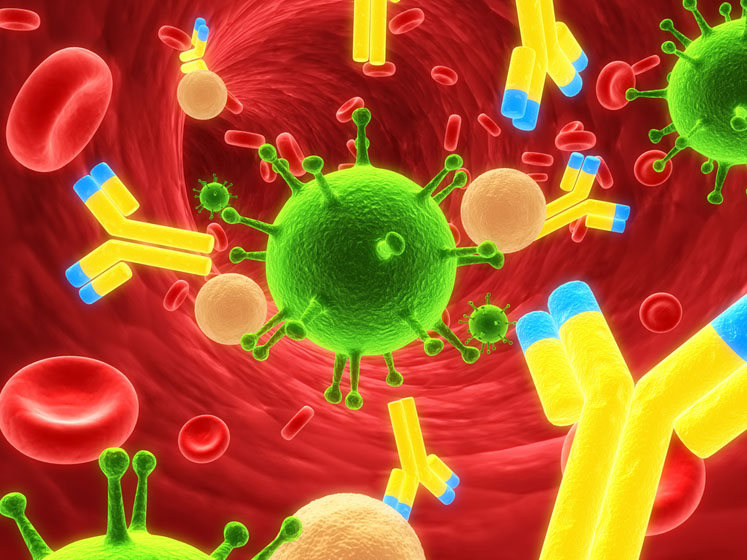Based on independent data, treatment indications for a specific form of modified citrus pectin (MCP) continue to expand, propelling this natural ingredient to the apex of today’s nutraceutical pharmacopeia.
With more than 50 published studies and new findings constantly emerging in the literature, this form of MCP continues to surpass expectations by demonstrating efficacy against every proinflammatory condition it has been tested against.
From organ fibrosis and metastatic cancer to neurological damage, its singular ability to halt and reverse fundamental pathogenic processes have earned this MCP considerable recognition in areas of medical research wherein safe, effective interventions — holistic or conventional — are often few and far between.
Moving beyond cancer and cardiovascular disease
During the last several decades, 16 published clinical and preclinical studies have established this MCP as a leading anticancer adjunct, active via multiple antitumorigenic mechanisms. The most recent published clinical study (Effect of Pectasol-C Modified Citrus Pectin (P-MCP) Treatment (tx) on PSA Dynamics in Non-Metastatic Biochemically Relapsed Prostate Cancer (BRPC) Patients (pts): Results of a Prospective Phase II Study) on this MCP is now completing its final arm, with additional results further substantiating its proven ability at 14.5 g/day to slow PSA doubling time and halt prostate cancer progression.1
With the capacity to promote apoptosis, block angiogenesis, slow metastasis, enhance oncology treatments and expose cancer to the immune system — among other benefits — this MCP remains a cornerstone of integrative cancer protocols.2,3
In addition to cancer, this form of MCP is also being studied intensively in cardiovascular disease, with results demonstrating its unique protective benefits. The most recent paper published in Scientific Reports in July 2019, demonstrates that this MCP reduces myocardial injury after ischaemic reperfusion.4 To date, this is now the fifteenth independent publication highlighting the critical role of this MCP in managing cardiovascular health.
In recent years, however, research groups worldwide have steadily expanded the disease indications for this ingredient beyond cancer and cardiovascular disease. Renowned institutes including Harvard University, Meir Medical Center and others are increasingly interested in studying this specific form of MCP against organ fibrosis, neurodegeneration, GI infection and numerous other conditions.
Concurrently, health professionals using this MCP across complex patient populations continue to observe first-hand the broad-spectrum benefits of this natural ingredient — magnifying the clinical relevance of what’s consistently reported in the published literature.
The most researched galectin-3 blocker
The wide-ranging success of this MCP against both acute and chronic inflammatory conditions, is largely derived from its unique relationship with the causative biomarker molecule, galectin-3 (Gal-3). Thousands of published studies, including large-scale cohort data, identify Gal-3 as an upstream driver of inflammatory, fibrotic and oncogenic diseases.5

A naturally occurring beta-galactoside binding protein, intracellular Gal-3 plays essential roles in cell cycle, immunity and repair. But when overexpressed extracellularly — owing to age, genetics, injury and other factors — it acts as both trigger and fuel for a cascade of pathogenic processes involving inflammation, fibrogenesis, tumorigenesis and immune dysregulation.
Gal-3 is now recognised as a highly modifiable, primary therapeutic target for an extensive range of proinflammatory, profibrotic and oncogenic conditions.
Importantly, the originally researched form of MCP bearing precise molecular specifications (3–13 kDa and less than 5% esterification) has emerged as the only available agent documented in the literature to effectively block the detrimental actions of excess Gal-3.
Because of its unique molecular structure, produced using a proprietary heat, pH and non-GMO enzyme modification process, this MCP holds the singular ability to enter the circulation and inhibit Gal-3. It has a naturally high binding affinity for Gal-3’s carbohydrate recognition domain and is therefore uniquely effective in blocking the proinflammatory, profibrotic and oncogenic signalling pathways driven by excess Gal-3.
In recent years, as researchers gained better understanding of the causative role of Gal-3 in diseases beyond metastatic cancer, this form of MCP quickly became the most researched Gal-3 blocker. The momentum of scientific substantiation on this natural ingredient continues to escalate, demonstrating its significant benefits against atherosclerosis, obesity, kidney failure and numerous other conditions.6–10
The importance of using the correct modified citrus pectin
It’s important to clarify here that modified citrus pectin is a generic term. Experts in the field remind us that there are a number of other modified citrus pectin products in the market that do not share the accurate specifications achieved via a precise modification process.
According to the literature, these molecular specifications are required for bioavailability and bioactivity against Gal-3 … and what set the original and only positively researched MCP apart from inferior forms.
One recent publication highlights the consequences of using unsubstantiated MCP. Researchers tested a previously unpublished form of MCP against Gal-3 in a model of cardiovascular fibrosis. Results showed no benefits in blocking Gal-3 to prevent cardiovascular damage. Independent analysis post-publication demonstrated that the MCP material used in this study did not hold the correct molecular specifications required for Gal-3 blockade.

In contrast, more than 20 published studies on the original, extensively researched form of MCP demonstrate its ability to target Gal-3 and, in doing so, address fibrosis in multiple conditions —offering an effective intervention against some of our most deadly diseases.
New research on MCP: brain injury and neuropathic pain
Galectin-3 represents one of the fastest growing fields of medical research, as scientists continue to unravel its extensive range of pathogenic effects. Likewise, as the only available Gal-3 inhibitor, the trajectory of published data on the correct form of MCP is tracking closely with the momentum of research on Gal-3.
One vitally important new study examined this MCP in an animal model of subarachnoid haemorrhage (SAH), induced via traumatic brain injury. Gal-3 was shown to be markedly elevated following brain injury and subsequently upregulated a number of proinflammatory cytokines, resulting in neurological damage.
Researchers used MCP to block Gal-3 and, in doing so, prevented the brain oedema and neurological impairment seen in controls. This MCP was also effective in reducing the post-SAH blood-brain barrier disruption, further demonstrating its protective effects in modulating expression of Gal-3.11
Another important new study showed that this MCP is also uniquely effective in reversing injury induced neuropathic pain — a significant clinical problem that is often unresponsive to pharmaceutical interventions. By inhibiting the proinflammatory processes elicited by Gal-3, including lymphocyte, macrophage and microglia activation, MCP effectively suppressed spinal nerve ligation-induced inflammation and significantly reduced neuropathic pain.12
The critical neuroprotective effects of this MCP continue to interest researchers, particularly as the role of Gal-3 in other neurodegenerative conditions such as Alzheimer’s and Parkinson’s gains substantiation.
Enhancing treatment
Another area in which this MCP excels is in the enhancement of other treatments — both conventional and complementary. This form of MCP demonstrates powerful synergistic potential, particularly in areas of cancer treatment.13–18 One recent study showed the powerful synergistic effect of this MCP when combined with the chemotherapy drug, paclitaxel, against ovarian cancer cells.18
With a number of additional studies showing its synergistic benefits in combination with nutraceutical and pharmaceutical adjuncts, this MCP represents a novel ingredient for use within a broad range of formulations. It consistently demonstrates additive and synergistic effects that can enhance treatment efficacy and improve clinical outcomes.
As researchers, formulators and integrative practitioners, our search for ingredient substantiation to address our increasing health burdens, is never-ending. The fast-growing body of data encompassing a broad range of indications for this specific form of MCP offers us perhaps the most valuable insight to date— and with it, a remarkable natural solution whose clinical relevance continues to evolve and impress with each new breakthrough publication.
References
- D, Keizman, et al., “Effect of Pectasol-C Modified Citrus Pectin (P-MCP) Treatment (tx) on PSA Dynamics in Non-Metastatic Biochemically Relapsed Prostate Cancer (BRPC) Patients (pts): Results of a Prospective Phase II Study,” J. Clin. Oncol. 36(6), 14 (2018).
- M. Azémar, et al., “Clinical Benefit in Patients with Advanced Solid Tumors Treated with Modified Citrus Pectin: A Prospective Pilot Study,” Clinical Med. Oncol. (2007): doi.org/10.4137/CMO.S285.
- B.W. Guess, et al., “Modified Citrus Pectin (MCP) Increases the Prostate-Specific Antigen Doubling Time in Men with Prostate Cancer: A Phase II Pilot Study,” Prostate Cancer Prostatic Dis. 6(4), 301–304 (2003).
- J. Ibarrola, et al., “Myocardial Injury After Ischemia/Reperfusion is Attenuated by Pharmacological Galectin-3 Inhibition,” Sci. Rep. 9(1), e9607 (2019).
- S. Sciacchitano, et al., “Galectin-3: One Molecule for an Alphabet of Diseases, from A to Z,” Int. J. Mol. Sci. 19(2), 379 (2018).
- Y. Lu, et al. “Modified Citrus Pectin Inhibits Galectin-3 Function to Reduce Atherosclerotic Lesions in apoE-Deficient Mice,” Mol. Med. Rep. 16(1), 647–653 (2017).
- G. Marín-Royo, et al., “Inhibition of Galectin-3 Ameliorates the Consequences of Cardiac Lipotoxicity in a Rat Model of Diet-Induced Obesity,” Dis. Model Mech. 11(2): pii: dmm032086 (2018).
- E. Martínez-Martínez, et al., “Galectin-3 Inhibition Prevents Adipose Tissue Remodeling in Obesity,” Int. J. Obes. (Lond.) 40(6), 1034–1038 (2016).
- M. Kolatsi-Joannou, et al., “Modified Citrus Pectin Reduces Galectin-3 Expression and Disease Severity in Experimental Acute Kidney Injury,” PLoS One 6(4): e18683 (2011).
- H.Y. Li, et al., “Galectin 3 Inhibition Attenuates Renal Injury Progression in Cisplatin-Induced Nephrotoxicity,” Biosci. Rep. 38(6): doi: 10.1042/BSR20181803 (2018).
- H. Nishikawa, et al., “Modified Citrus Pectin Prevents Blood-Brain Barrier Disruption in Mouse Subarachnoid Hemorrhage by Inhibiting Galectin-3,” Stroke 49(11), 2743–2751 (2018).
- Z. Ma, et al., “Galectin-3 Inhibition is Associated with Neuropathic Pain Attenuation after Peripheral Nerve Injury,” PLoS One 11(2): e0148792 (2016).
- N. Tehranian, et al., “Combination Effect of PectaSol and Doxorubicin on Viability, Cell Cycle Arrest and Apoptosis in DU-145 and LNCaP Prostate Cancer Cell Lines,” Cell Biol. Int. 36(7), 601–610 (2012).
- G. Hossein, et al., “Synergistic Effects of PectaSol-C Modified Citrus Pectin: An Inhibitor of Galectin-3 and Paclitaxel on Apoptosis of Human SKOV-3 Ovarian Cancer Cells,” Asian Pac. J. Cancer Prev. 14(12), 7561–7568 (2013).
- S. Conti, et al., “Modified Citrus Pectin as a Potential Sensitizer for Radiotherapy in Prostate Cancer,” Integr. Cancer Ther. 17(4), 1225–1234 (2018).
- J. Jiang, I. Eliaz and D. Sliva, “Synergistic and Additive Effects of Modified Citrus Pectin with Two Polybotanical Compounds, in the Suppression of Invasive Behavior of Human Breast and Prostate Cancer Cells,” Integr. Cancer Ther. 12(2), 145–152 (2013).
- C. Ramachandran, et al., “Synergistic Antioxidant and Anti-Inflammatory Effects Between Modified Citrus Pectin and Honokiol,” Evid. Based Complement. Alternat. Med. (2017): doi: 10.1155/2017/8379843.
- G. Hossein, et al., “Pectasol-C Modified Citrus Pectin Targets Galectin-3-Induced STAT3 Activation and Synergize Paclitaxel Cytotoxic Effect on Ovarian Cancer Spheroids,” Cancer Med. (2019): doi: 10.1002/cam4.2334.
